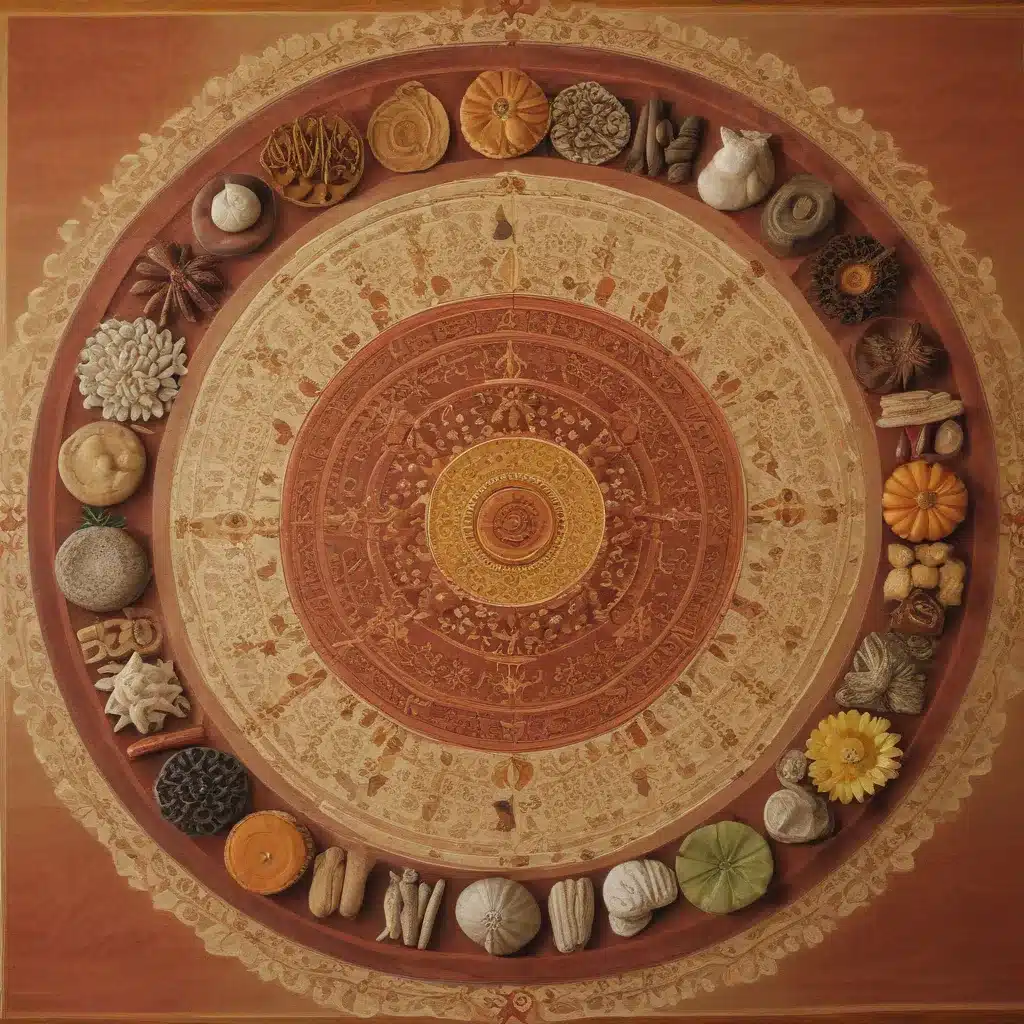Unlocking the Secrets of Vastu Shastra: A Journey Towards Harmony
As I sit in my cozy office overlooking the bustling streets of Nottingham, UK, I can’t help but feel a sense of wonder and curiosity about the ancient Indian science of Vastu Shastra. You see, I’m not just your average cleaning services provider – I’m also a bit of a self-proclaimed design and architecture enthusiast. And let me tell you, the more I delve into the principles of Vastu Shastra, the more I’m convinced that it holds the key to creating truly harmonious living and working spaces.
But what exactly is Vastu Shastra, you ask? Well, in a nutshell, it’s an ancient Hindu architectural science that aims to align the built environment with the natural flow of energy, or “prana,” in the universe. The word “Vastu” comes from the Sanskrit word “vas,” meaning to “dwell,” and “Shastra” means “scripture” or “shastras,” which are sacred Hindu texts. So, Vastu Shastra is essentially the blueprint for designing and constructing buildings and spaces that are in sync with the cosmic forces and natural elements.
Now, I know what you’re thinking – this all sounds a bit woo-woo, doesn’t it? But bear with me, because the principles of Vastu Shastra are actually quite grounded in practical and scientific principles. You see, the ancient Indian sages who developed this system of design believed that the placement and orientation of a building, as well as the arrangement of its internal spaces, can have a profound impact on the well-being and prosperity of its occupants.
Aligning with the Elements: The Guiding Principles of Vastu Shastra
At the heart of Vastu Shastra are the five basic elements of nature: earth, water, fire, air, and ether. These elements are believed to be the building blocks of the universe, and they each have their own unique properties and energetic qualities. The goal of Vastu Shastra is to create a harmonious balance between these elements within a given space, in order to promote a sense of well-being, abundance, and overall positivity.
One of the key principles of Vastu Shastra is the concept of the Vastu Purusha Mandala – a cosmic diagram that represents the divine being whose body is thought to be the foundation of the building. This mandala is divided into 9 or 81 smaller squares, each of which is associated with a different deity or planetary influence. The placement of various rooms, entrances, and other architectural features within this mandala is believed to have a significant impact on the flow of energy and the overall “vibe” of a space.
For example, the northeast corner of a building is considered the most auspicious and is often associated with the element of ether and the deity Brahma, the creator of the universe. This is the ideal location for the main entrance, as it is thought to invite in positive, prosperity-enhancing energies. Conversely, the southwest corner is often seen as the domain of the element of earth and the deity Yama, the god of death, and is best avoided for sensitive areas like the kitchen or bedroom.
But Vastu Shastra is not just about the placement of rooms and entrances – it also takes into account the orientation of the building itself. The ideal orientation is said to be with the main entrance facing east, as this is the direction of the rising sun and the element of fire. This is thought to promote a sense of vitality, energy, and new beginnings. A north-facing entrance, on the other hand, is associated with the element of water and the deity Varuna, which can bring a more introspective, reflective energy.
Unlocking the Power of Symmetry and Proportion
Another key aspect of Vastu Shastra is the emphasis on symmetry and proportion within the built environment. The ancient sages believed that the human body and the universe itself were governed by mathematical principles and sacred geometries, and that these same principles should be applied to the design of buildings and spaces.
For example, the concept of the “golden ratio” – a mathematical ratio that is often found in nature and is considered to be aesthetically pleasing – is a central tenet of Vastu Shastra. The proper application of this ratio, as well as other sacred geometric forms, is believed to create a sense of balance, harmony, and even spiritual transcendence within a space.
But it’s not just about the overall shape and layout of a building – Vastu Shastra also pays close attention to the proportions and placement of individual rooms and architectural features. The size and positioning of windows, doors, and even furniture are all carefully considered in order to optimize the flow of energy and natural light.
Bringing Vastu Shastra into the Modern World
Now, you might be wondering, “Okay, this all sounds fascinating, but how do I actually apply these principles to my own home or office?” Well, that’s a great question, and one that I’ve pondered quite a bit myself.
As a cleaning services provider, I’ve had the privilege of seeing the ins and outs of all kinds of living and working spaces. And let me tell you, the ones that seem to have a real sense of harmony and positive energy are often those that have been designed or renovated with Vastu Shastra principles in mind.
For example, I recently had the opportunity to work with a client who was renovating their home in Nottingham. They were really keen on incorporating Vastu Shastra principles, and the results were truly remarkable. By carefully positioning the main entrance, arranging the rooms according to the Vastu Purusha Mandala, and incorporating elements like water features and natural lighting, they were able to create a space that felt warm, inviting, and absolutely bursting with good vibes.
I’ve also seen how Vastu Shastra can be applied to commercial spaces, like offices and retail stores. One of my clients, a local Nottingham-based business owner, swears by the principles of Vastu Shastra and has used them to design her workspace. She’s noticed a significant improvement in the overall productivity and morale of her team, as well as an increase in customer satisfaction and sales.
Embracing the Holistic Approach of Vastu Shastra
But you know, it’s not just about the physical layout of a space – Vastu Shastra also emphasizes the importance of incorporating natural elements and harmonious colors and materials. Things like the type of wood used in furniture, the placement of plants and water features, and even the choice of wall colors can all have a profound impact on the overall energy of a space.
I remember one client who was struggling with a persistent negative energy in their home. They had tried all sorts of traditional cleaning and decluttering methods, but nothing seemed to work. It wasn’t until they brought in a Vastu Shastra consultant that they finally started to see a shift. By making a few strategic changes, like rearranging the furniture, adding some strategically placed mirrors, and incorporating more natural elements, the space was transformed. The negative energy lifted, and the homeowners reported feeling more calm, focused, and productive.
And you know, that’s really what Vastu Shastra is all about – it’s a holistic approach to design and architecture that takes into account the well-being of the occupants, both physically and energetically. It’s about creating spaces that are not just aesthetically pleasing, but that also nourish the mind, body, and spirit.
Embracing the Timeless Wisdom of Vastu Shastra
As I sit here and reflect on my experiences with Vastu Shastra, I can’t help but feel a deep sense of appreciation for the timeless wisdom of this ancient Indian science. It’s a reminder that there is so much more to design and architecture than just the practical and functional aspects.
You see, I believe that the spaces we inhabit have a profound impact on our overall well-being and quality of life. And Vastu Shastra offers us a holistic and harmonious approach to creating those spaces. By aligning our built environments with the natural flow of energy and the principles of sacred geometry, we can cultivate a sense of balance, abundance, and joy that extends far beyond the physical realm.
So, whether you’re looking to renovate your home, design a new office space, or simply create a more harmonious and positive living or working environment, I encourage you to explore the rich and profound wisdom of Vastu Shastra. Who knows – it just might be the key to unlocking a whole new level of abundance and well-being in your life.







